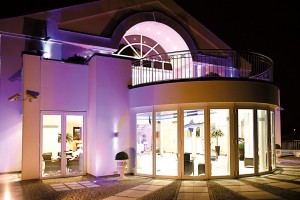
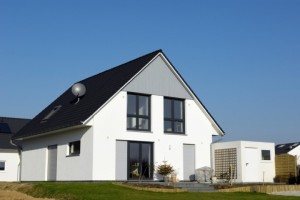
System: Prefabricated House
Component: Outer Building Wall
The prefabricated house used as a single-family home is the basis for this system. “Home inhabitability” was chosen as the main high-performance criteria. For this purpose, the selected component in the analysis is the “outer building wall” that is the most important structure element for sound emission protection. The wall consists of two concrete layers that are separated with an insulation wall with the defining parameters being wall length, height and thickness. Figure 1, derived from [1], shows the general layout of the chosen component:
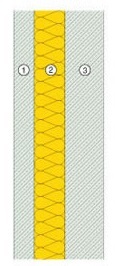
Prefabricated concrete elements can stand firmly for over 100 years, when maintained constantly. Depending on the concrete quality, the expected service time of such a wall lies around 60-100 years. The maintenance efforts for solid concrete walls are generally small, but to ensure proper noise insulation it is advised to maintain the wall every 7 to 13 years (M.h = Maintenance), closing several cracks in the wall or other openings. Most walls are also coated with inner and outer plastering for additional chloride failure protection which needs to be replaced every 10 to 20 years (PR.h = Plaster Renewal) depending on local weather events. While not common practice due to higher maintenance costs, it is also recommended that outer concrete walls are completely replaced every 50 to 59 years (CR.h = Complete Replacement) when the building near a water-contested area with higher atmospheric humidity, because concrete deterioration rises rapidly under such circumstances.
Figure 2 shows the maintenance timeline when all maintenance actions are executed as much as possible. This cost-intensive measure is used when the sound insulation and building component condition always needs to be at the highest performing state. Such conditions are more commonly required in areas with higher earthquake expectancies.
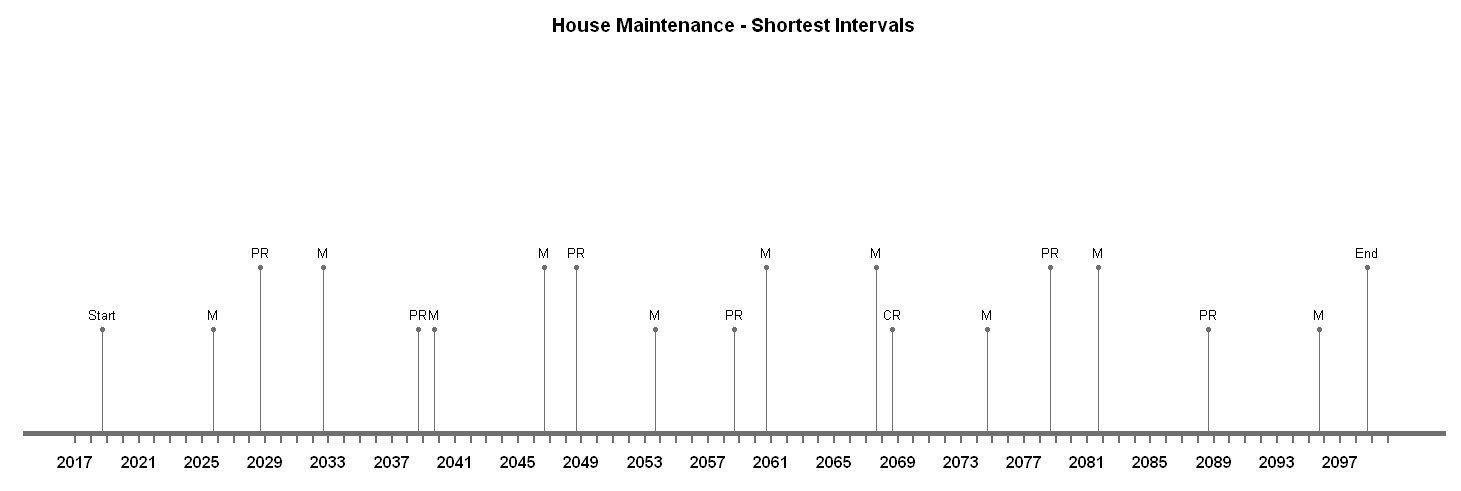
With Figure 3, the opposite of maintenance frequency is shown. This measure represents the most-cost effective option, when the components are not expected to be at its highest performance all the time in more favorable conditions. These conditions are more common in areas without much outside influence on the building.
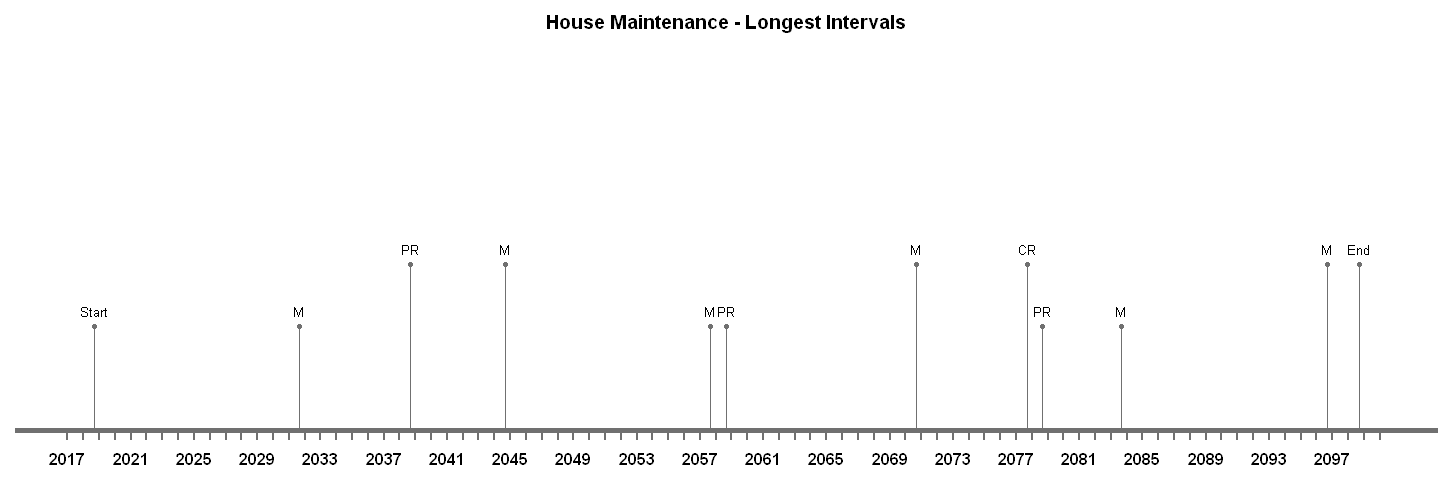
Sources:
[1] Beton.org, 2019. Wände aus Beton.
https://www.beton.org/wissen/wohnungsbau/wand/
[2] Soundproofing Company, 2019. The Triple Leaf Effect & Air Cavity Depth.
https://www.soundproofingcompany.com/soundproofing101/triple-leaf-effect/
[3] facilitiesnet, 2019. Wall Maintenance Depends on Construction Type.